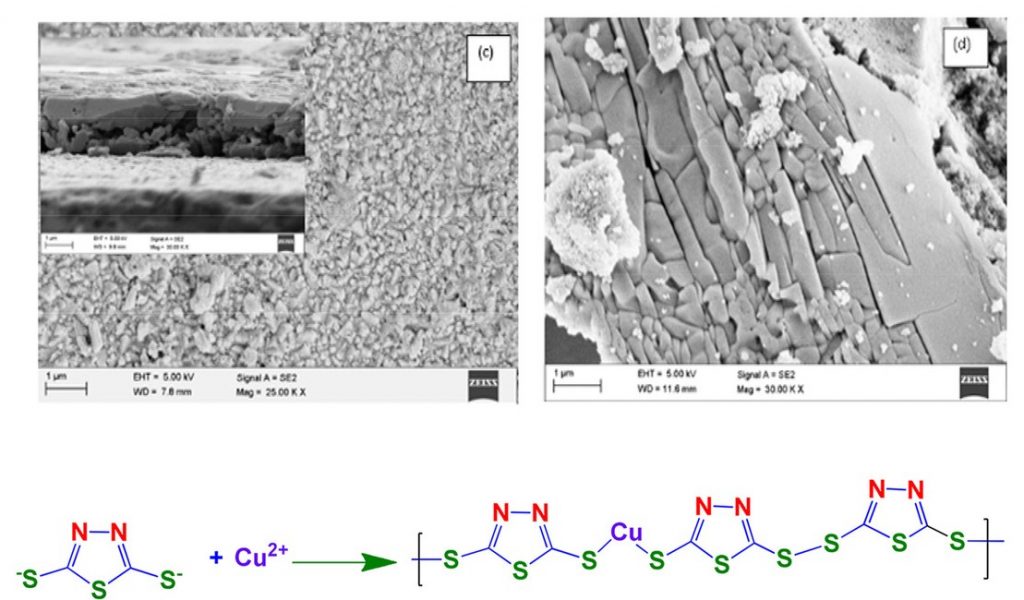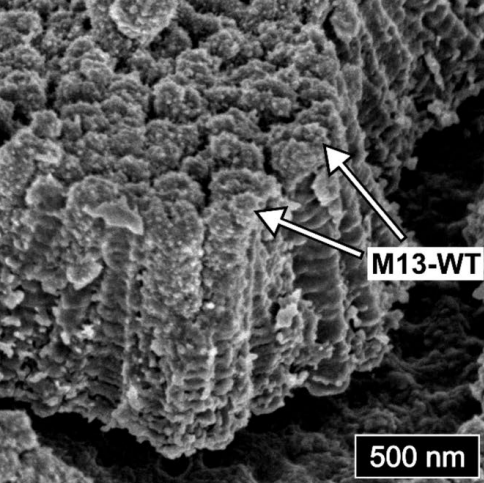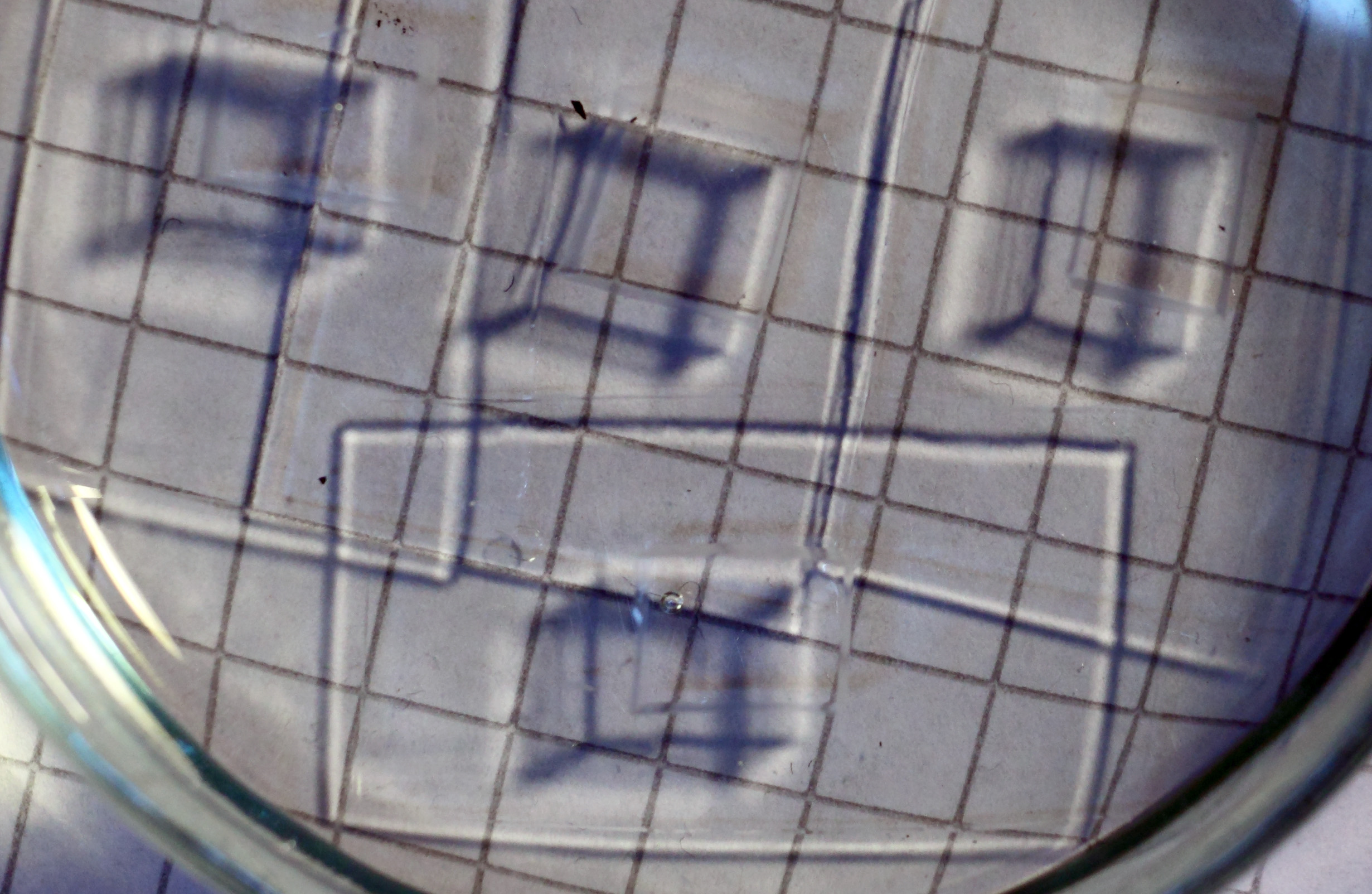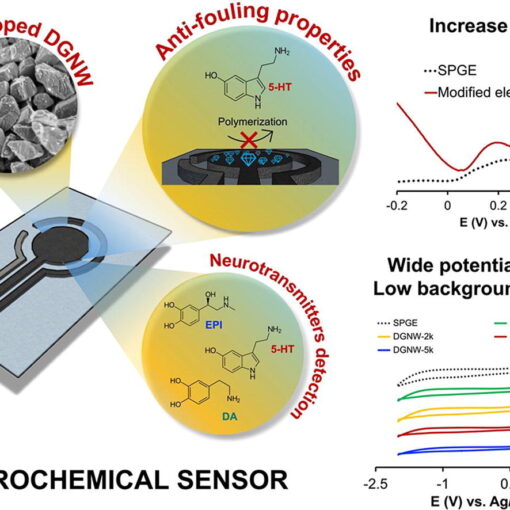
FESEM images of electropolymerized poly‐CuDMcT film on FTO surface (inset represents the cross‐section of the poly‐CuDMcT film),(left) coated poly‐CuDMcT film. Scheme (bottom) displays the metallopolymer formation.
To finish off the year, Vishwanath published a paper in ChemElectroChem together with his old group in India. He prepared a copper-ion coordinated metallopolymer that he wanted to use for his ion transfer experiments here in Poland. But when it didn’t function as intended for that purpose he noticed that it had some photoelectrochemical properties. So Vishwanath sent the material to his Indian collaborators that are specialising in this kind of characterisation.
In the article they note thaty cuprous and cupric ions coordinated functional 2,5-dimercapto-1,3,4- Thiadiazole based metallopolymers exhibit the good visible light absorption and p-type photoelectrochemical behaviour. The swift response, repeatable photovoltage of ~55 mV with zero applied current and high photocurrent values at different bias potentials (~24 µA cm-2 @ -0.6 V vs Ag/AgCl in 0.1 KCl) in acidic electrolytes (0.5 M H2SO4) suggest this metallopolymer as an acid stable p-type photocathode material. In contrast, the electropolymerized non-metallated polymers exhibit the n-type photoactivity.




